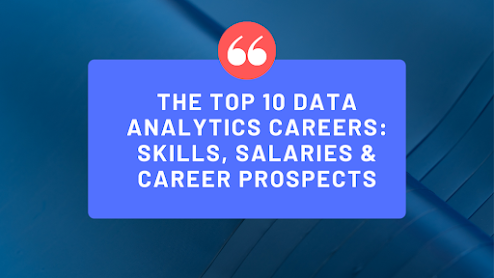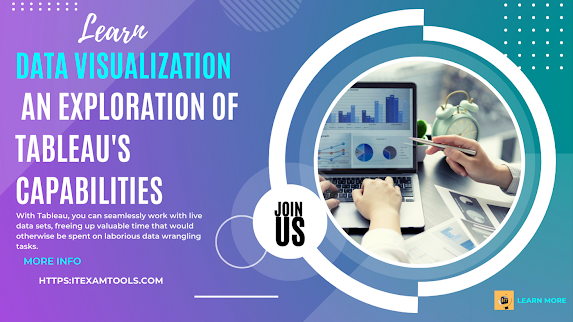How Much Statistics Do You Really Need to Become a Data Scientist?
How Much Statistics Do You Really Need to Become a Data Scientist?
Many aspiring data scientists wonder, “Do I need an advanced degree in mathematics to succeed in data science?” While statistics plays a fundamental role in data-driven decision-making, you don’t need to be a math genius to break into the field. Start learning statistics for data science today.
In this guide, we’ll explore the essential statistical concepts you actually need for data science, how they are applied in real-world projects, and the best way to learn them without feeling overwhelmed.
Why is Statistics Important in Data Science?
Statistics is the foundation of data science because it enables professionals to analyze data, make predictions, and validate results. Whether you're working on machine learning models, business analytics, or A/B testing, understanding statistics helps ensure accuracy, reliability, and actionable insights. Master statistics for data science.
Essential Statistics for Data Science
1. Descriptive Statistics: Understanding Your Data
Before diving into complex algorithms, it’s crucial to understand basic statistical measures that summarize data:
Mean, Median, and Mode: Measure central tendency to find typical values in your dataset.
Variance & Standard Deviation: Assess data spread and variability.
Skewness & Kurtosis: Help understand the shape of data distribution.
✅ Example: Before training a machine learning model, a data scientist might calculate the standard deviation to check for highly variable features that need normalization. Learn these core statistics.
2. Probability Theory: The Heart of Predictions
Data science relies on probability to predict future outcomes based on existing data. Key concepts include:
Conditional Probability & Bayes’ Theorem: Used in spam filtering and recommendation engines.
Probability Distributions (Normal, Binomial, Poisson): Essential for predictive modeling and hypothesis testing.
Law of Large Numbers & Central Limit Theorem: Help in understanding sample vs. population dynamics.
✅ Example: A product recommendation system in eCommerce uses Bayes’ Theorem to suggest items based on prior purchase history. Apply probability in data science.
3. Inferential Statistics: Making Data-Driven Decisions
Inferential statistics help data scientists draw conclusions from samples and test hypotheses. Important techniques include:
Confidence Intervals: Estimate population parameters from sample data.
Hypothesis Testing (T-tests, Chi-Square, ANOVA): Validate assumptions and compare groups.
P-values & Significance Levels: Help determine whether findings are statistically significant.
✅ Example: A marketing team runs an A/B test on two ad versions and uses hypothesis testing to determine which one converts better. Explore inferential statistics.
4. Regression Analysis: Understanding Relationships Between Variables
Regression models help predict an outcome based on independent variables:
Linear Regression: Predicts continuous values, like house prices or stock trends.
Multiple Regression: Analyzes the effect of multiple variables on an outcome.
Logistic Regression: Used for classification tasks, such as spam detection.
✅ Example: An insurance company uses linear regression to predict customer claim amounts based on age, vehicle type, and driving history. Learn regression techniques.
5. Data Distributions and Sampling Methods
To make accurate predictions, data scientists must understand different types of distributions and sampling techniques:
Normal Distribution: Used in many machine learning models.
Poisson & Binomial Distributions: Common in event forecasting.
Random Sampling, Stratified Sampling: Ensures diverse representation in datasets.
✅ Example: In medical research, stratified sampling is used to ensure an equal representation of patients from different age groups. Study data distributions.
6. Data Visualization & Exploratory Data Analysis (EDA)
Good visualization techniques make statistical analysis more intuitive:
Histograms & Box Plots: Show data distribution and outliers.
Scatter Plots & Correlation Matrices: Identify relationships between variables.
Heatmaps & Trend Graphs: Highlight key patterns in data.
✅ Example: A social media analytics team might use a heatmap to track user engagement across different time zones. Improve data visualization skills.
Do You Need Advanced Statistics for Data Science?
For most data science jobs, you only need to understand and apply the core concepts listed above. However, if you want to specialize in certain fields, here’s when deeper knowledge might be required:
✅ Basic Statistics for:
Data Analytics
Business Intelligence
Data Cleaning & Preprocessing
🔹 Intermediate Statistics for:
Machine Learning Model Optimization
Experiment Design & A/B Testing
Predictive Analytics
🔥 Advanced Statistics for:
Deep Learning & AI Research
Bayesian Statistics
Statistical Modeling in Financial & Medical Fields
How to Learn Statistics for Data Science
Many aspiring data scientists struggle with statistics because they focus too much on theory and not enough on application. Here’s the best approach:
1. Learn by Doing (Hands-On Approach)
Use Python (NumPy, Pandas, SciPy) and R for statistical computations.
Work on real-world datasets instead of just studying formulas.
Use online tools like Kaggle, Google Colab, and Jupyter Notebooks for interactive learning.
2. Follow Structured Learning Resources
Online Courses: Platforms like Coursera, Udemy, and edX offer structured data science statistics courses.
Books: “The Elements of Statistical Learning” and “Practical Statistics for Data Scientists” are great references.
YouTube Tutorials: Short, engaging videos can simplify difficult topics.
3. Apply Statistics to Real-World Problems
Conduct A/B testing on marketing data to compare customer engagement.
Use regression models to predict sales performance based on historical data.
Create data visualizations to present findings effectively.
Final Thoughts: How Much Statistics Do You Really Need?
You don’t need a Ph.D. in statistics to be a great data scientist, but understanding key statistical concepts is crucial. Focus on learning the most relevant techniques for your data science goals and apply them in real-world projects. Start learning today.
By mastering descriptive statistics, probability, regression, and hypothesis testing, you’ll be well-equipped to make data-driven decisions and build robust machine learning models.
So, are you ready to enhance your statistics knowledge and become a successful data scientist? Begin your journey today!.
-------------------------------------------------------------------------------------------------------------------
https://analyticstwitter.blogspot.com/2023/07/the-top-21-data-engineering-interview.html
https://analyticstwitter.blogspot.com/2023/07/the-top-10-data-analytics-careers.html
https://analyticstwitter.blogspot.com/2023/07/5-types-of-binary-tree-explained.html
https://analyticstwitter.blogspot.com/2025/03/blog-post.html
https://analyticstwitter.blogspot.com/2024/05/conditional-probability-explained.html




Comments
Post a Comment